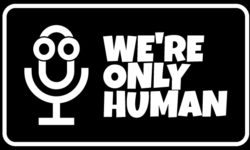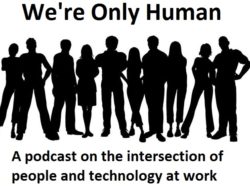Over the last few weeks the environment has changed dramatically when it comes to work and life. As an HR leader, I can remember other times of crisis in the past, such as when our employees had their homes destroyed by tornadoes. We have to deal with the logistics of this from a work perspective, because HR is often the hub of policies around working remotely or being flexible for those that have personal needs that limit their availability for work during emergencies.
However, I can't stress enough the need to embrace compassion for our people.
Think of it this way: when our local schools asked a few days ago if families had wifi at home, I know there are some families that do not have it because they can't afford something that most of us consider a basic fact of life. Some of those children were getting free breakfast and/or lunch at school to help fill gaps in their nutrition that they weren't getting at home.
When you think about taking care of your people, that care for the basic components of life should be part of the equation.
The Science of Doing Great Work: Tips for Working RemotelyÂ
Before I jump into some of the tactical ideas to help support your employees during this time, I want to point out something for those (you or your employees) that might not be accustomed to working from home.
When you're in an office, you have a fairly rigid schedule and setup. At home, that's not the case. One of the biggest challenges for many, even though it technically shouldn't be different than working in an office, is prioritizing what to do. The science we know on how the brain functions shows us that we have a limited amount of capacity to focus.
Focus for an hour? Sure. You can do that. Focus for six hours? Not likely.
For that reason, it's important to approach your to do list strategically. For those things that you find hardest to do because of their greater demand on mental capacity (creative work, strategy meetings, etc.), do those earlier in the day or when you have uninterrupted time (which will be a challenge for those with kids at home during crisis times). For those things that require less mental energy (responding to emails, for instance), save those for later in the day when you are naturally in a lower state of focus.
If you make this change, you will probably be surprised to see the difference in what you can get done, how creative you are, and how you feel. For more on this you can read some of my takeaways from Two Awesome Hours, where a doctor explains this in much more detail than I could.
 Oh, and skip answering emails right before that big meeting (even if it's virtual). You will use your much-needed focus and acuity on routine messages and fail to have that focus when you need it during the meeting. Trust me on this one. If you DO have a big meeting you need to be “on” for, then take a walk outdoors without your phone for 5-10 minutes in the last half hour before the meeting begins. That can help to refresh your energy and focus.
Oh, and skip answering emails right before that big meeting (even if it's virtual). You will use your much-needed focus and acuity on routine messages and fail to have that focus when you need it during the meeting. Trust me on this one. If you DO have a big meeting you need to be “on” for, then take a walk outdoors without your phone for 5-10 minutes in the last half hour before the meeting begins. That can help to refresh your energy and focus.
Those big meetings include creative ways you might support or cover your employees during this time. Or maybe one of these options that you never quite seem to have time to get to… Continue reading





 This coming year, my wish for you is that you become more of a troublemaker in your business.
This coming year, my wish for you is that you become more of a troublemaker in your business. The 2016 HR Technology Conference had a new feature: the
The 2016 HR Technology Conference had a new feature: the